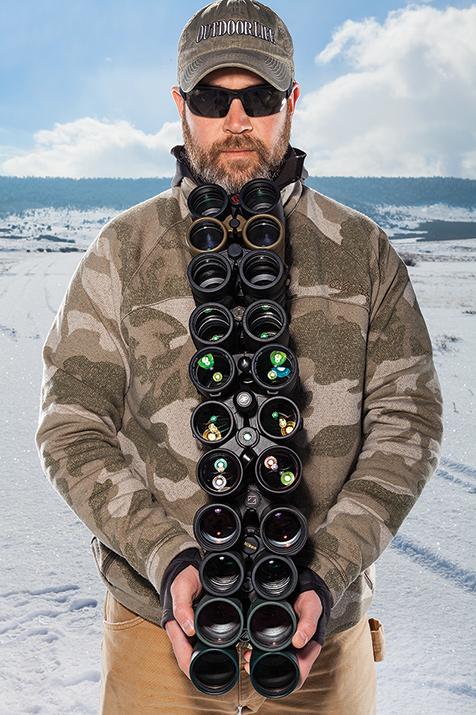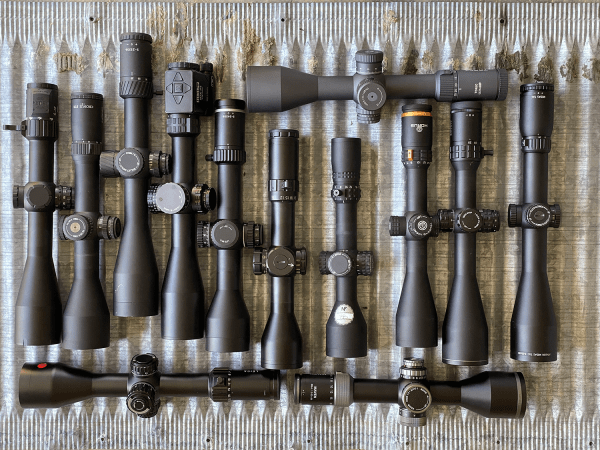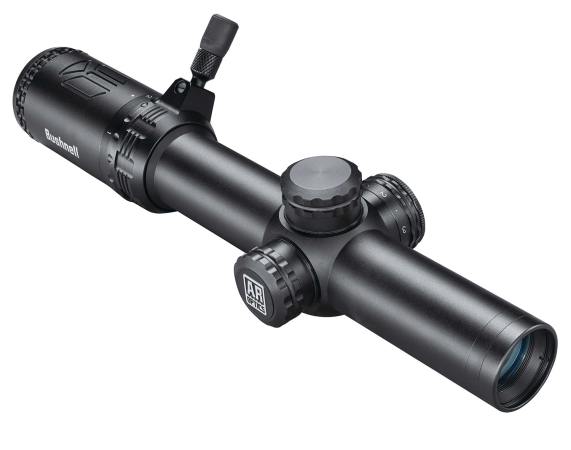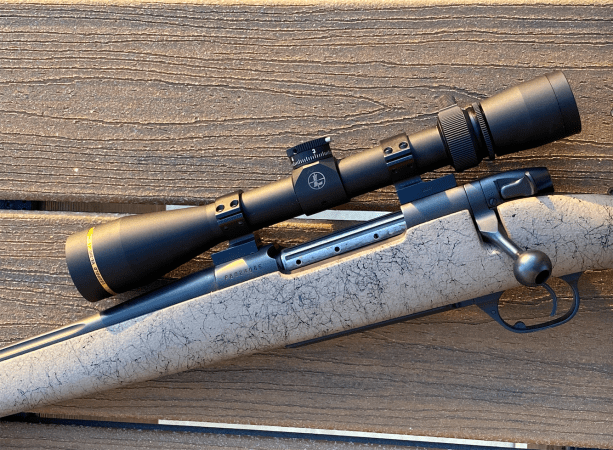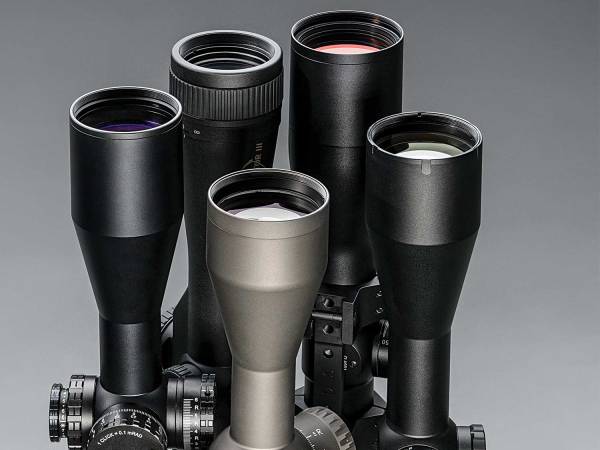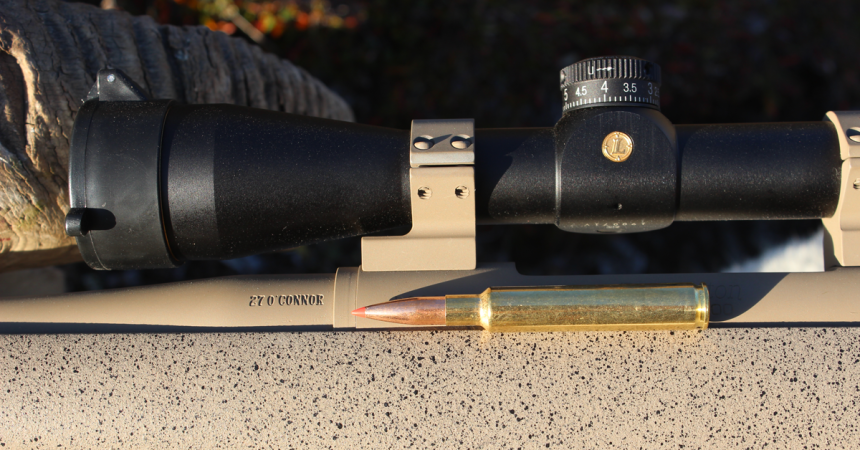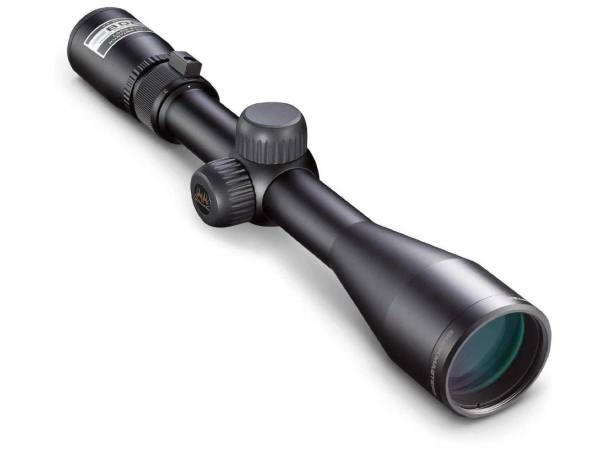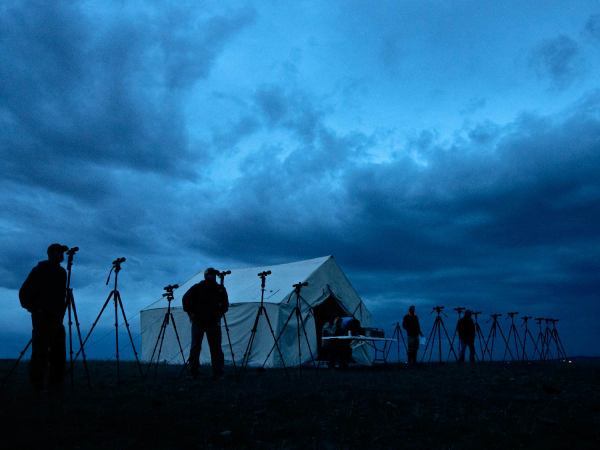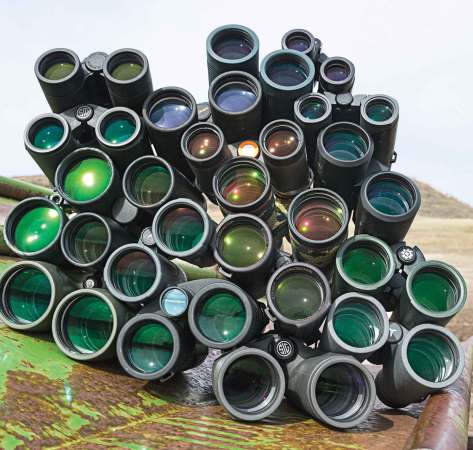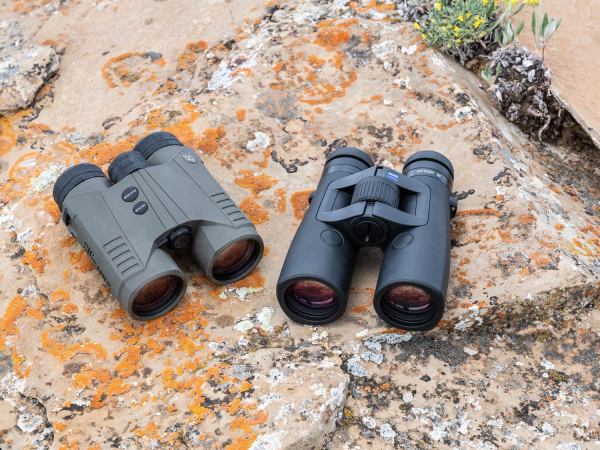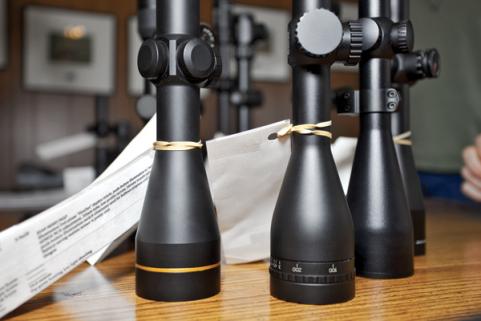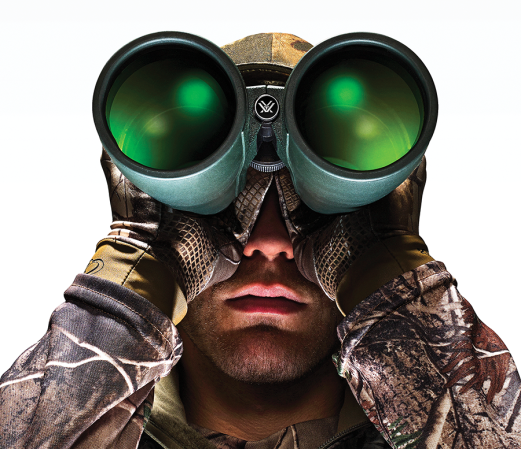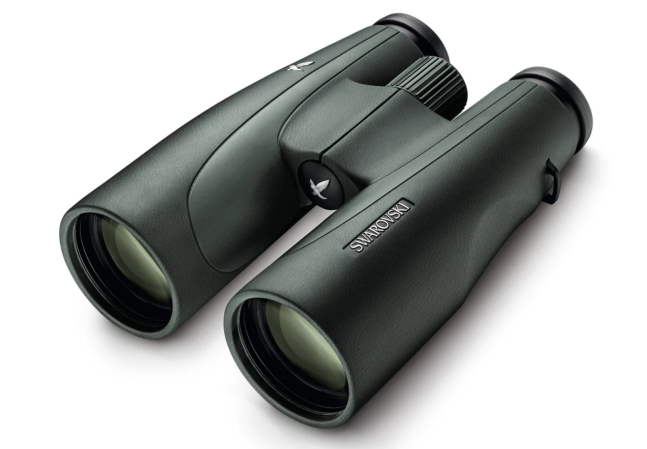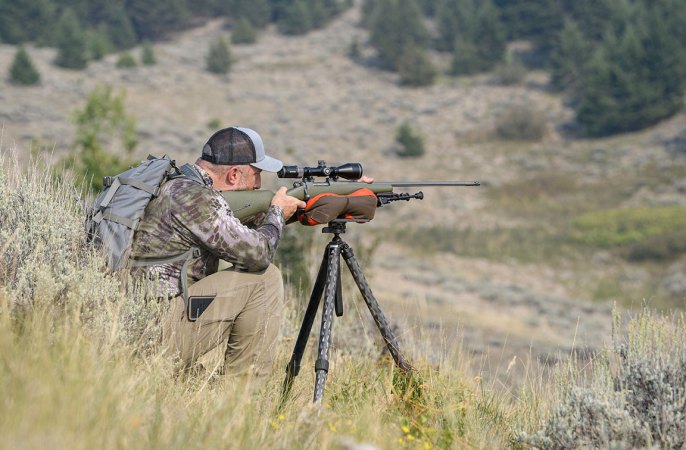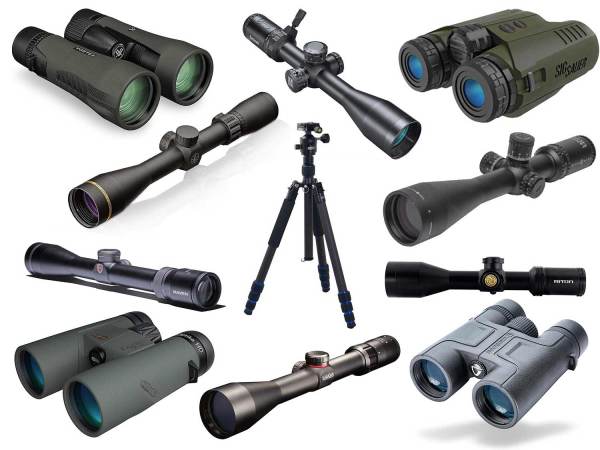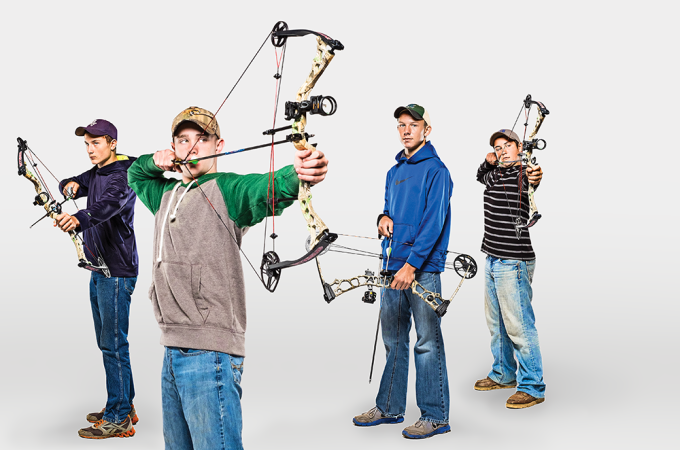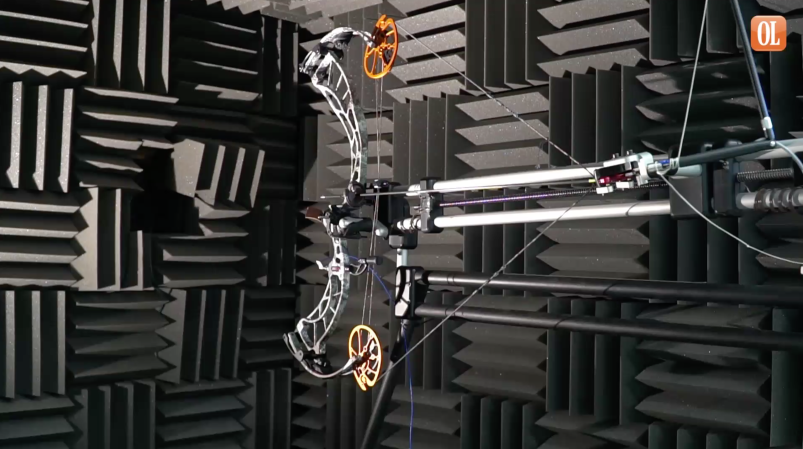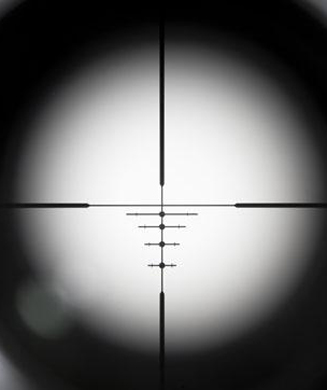We may earn revenue from the products available on this page and participate in affiliate programs. Learn More ›
Our optics test reveals subtle differences in quality and performance by applying both scientific analysis and subjective evaluation. The final score is based equally on both parts of the test. On the analytical side, we measure each optic’s resolution, or ability to see vanishingly small detail, using the gold standard of optics testing: a 1951 Air Force Resolution Target.
Because ours is a test of hunting optics, and we hunters rely most on our optics at dawn and twilight, the second half of the empirical score is based on low-light performance.
For this test, we plant one tester in an open field 100 yards (200 yards for spotting scopes) from our blacked-out house as darkness falls and have him slowly turn a wheel marked with contrasting black and white lines. Another tester looks at the wheel through the optics, and we record the time when the viewer can no longer discern the direction of the wheel’s lines. The longer an optic can “see” into the dark, the higher its score.
Riflescopes get additional treatment. We measure each scope’s windage and elevation adjustments to ensure they move the reticle in the advertised increments, and we also evaluate the visibility of the reticle in low-light situations.
Scores from our resolution, low-light, and mechanical evaluation are aggregated in our Optical/Mechnical Quality rating.
But there’s more to a hunting glass than the glass itself. How forgiving is a riflescope’s eye relief? How long can you look through a spotting scope’s highest magnification before your eyes beg for a break? How well can you see the points on the rack of a distant mule deer buck? We answer all those questions by glassing objects and animals at our Montana test facility and getting a feel for how the optic performs in real-world situations.
Those subjective assessments are reflected in our Perceived Image, Performance, and Design/Durability scores.
The optics in each category that we determine delivers the best value for the money gets our Great Buy award. And the optics with the highest overall scores earn our Editor’s Choice designations.

